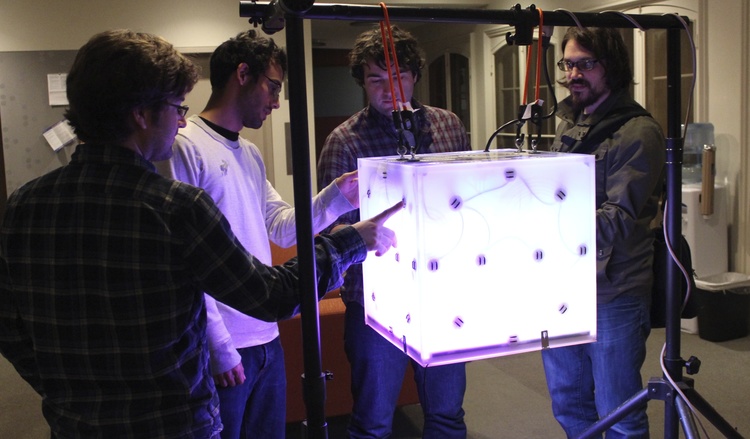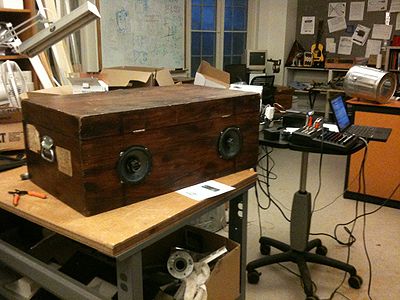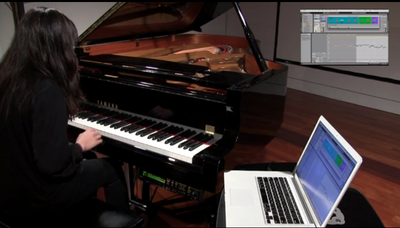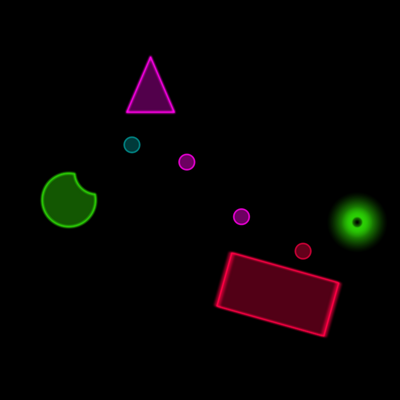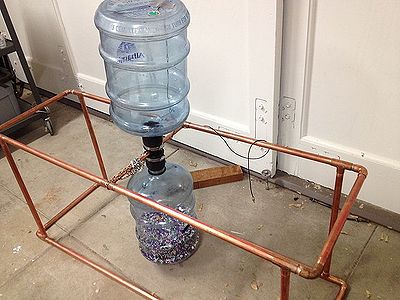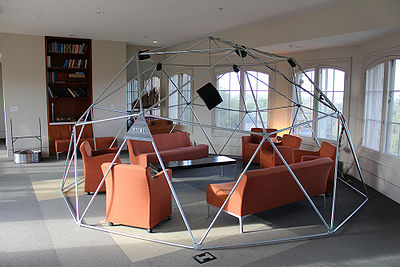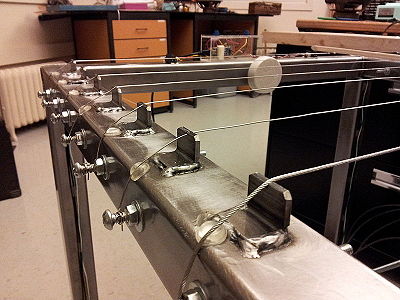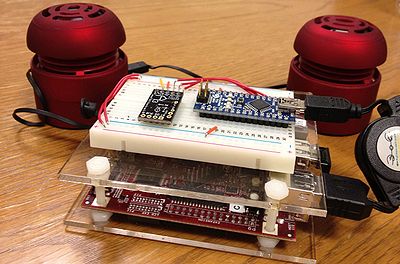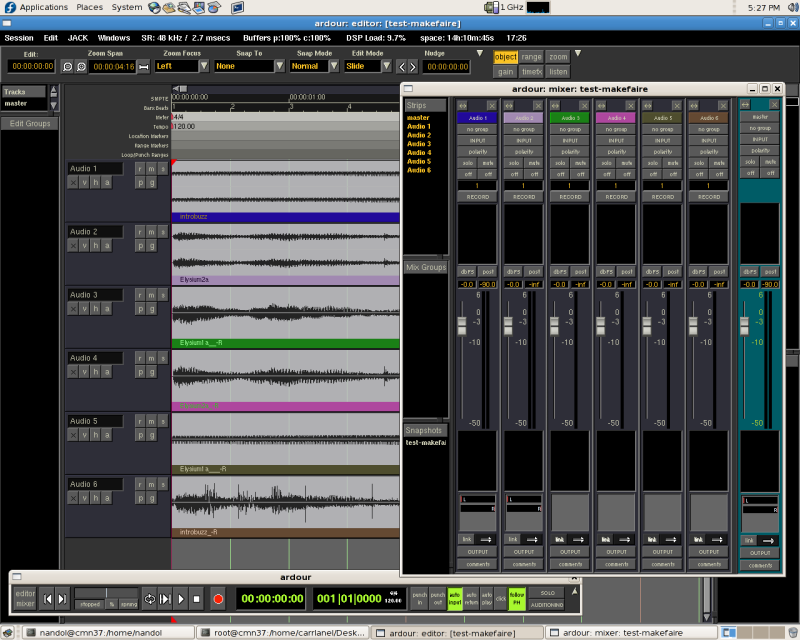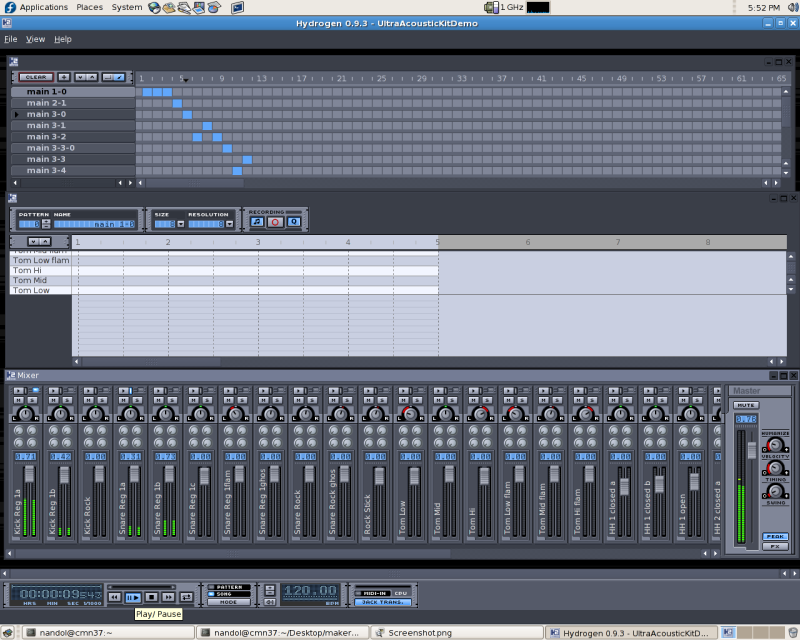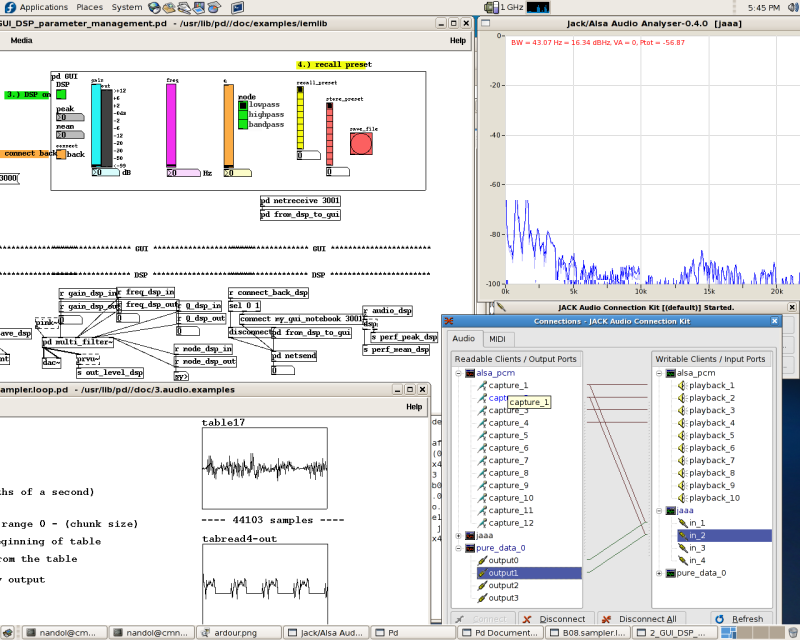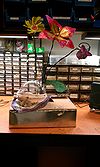MakerFaire
Contents
Introduction
The Center for Computer Research in Music and Acoustics (CCRMA -- pronounced "karma") is an interdisciplinary center at Stanford University dedicated to artistic and technical innovation at the intersection of music and technology. We are a place where musicians, engineers, computer scientists, designers, and researchers in HCI and psychology get together to develop technologies and make art. In recent years, the question of how we interact physically with electronic music technologies has fostered a growing new area of research that we call Physical Interaction Design for Music. We emphasize practice-based research, using DIY physical prototying with low-cost and open source tools to develop new ways of making and interacting with sound. At the Maker Faire, we will demonstrate the low-cost hardware prototyping kits and our customized open source Linux software distribution that we use to develop new sonic interactions, as well as some exciting projects that have been developed using these tools. Below you will find photos and descriptions of the projects and tools we will demonstrate.
The Siren Organ
Gina Collecchia, Kevin McElroy, Dan Somen
Description: The Siren Organ is an electro-mechanical instrument consisting of compressed air and motor-driven disks with evenly spaced perforations. Three different controllers were designed, each with a dedicated disk (the siren). These controllers contain a network of air tubes to direct air flow from a compressor to individual rings on the sirens. These rings have different numbers of equally spaced holes to create a fundamental frequency, and varying radii of the holes to create harmonics.
The motor speed can be controlled by a fader, creating frequency sweeps that are classic to the siren sound. A custom manifold of valves, buttons, and air pathways as well as ball valves and blow guns control the pressure of the compressed air. Hence, the performer can control volume in addition to pitch. A master valve connects to each controller and splits into 4 hoses + valves, to provide an upper limit of the possible pressure. The hose leading from the compressor is also split into 3 channels, feeding each controller.
[[<iframe width="640" height="360" src="//www.youtube.com/embed/lAqTPJSfitM?feature=player_embedded" frameborder="0" allowfullscreen></iframe>]]
The Enchanted Bicycle Forrest
Myles Borins
Come explore the bicycle forrest and experience a breadth of ambient sounds that will engage and inspire.
Busk Box
Sasha Leitman
The Busk Box is a street performance system that combines the traditions of wandering street performers and musicians with the modern technologies. Inside of a 1911 wooden trunk, 2 6" speakers, 1 10" subwoofer, 2 class-T amplifiers and a portable mixer are all powered by lithium-ion batteries. In addition, the box is supported by folding wheels and legs which enable the box to be set up and torn down in less than 3 minutes. This platform was designed to bring experimental and electronic music to the San Francisco Fisherman's Wharf district.
Jnana
Colin Sullivan
“Jnana” is a generative musical accompaniment system integrated into Ableton Live. It has the ability to analyze MIDI input and generate new material in a similar style. It can analyze input in real-time or from desired clips within Ableton and can populate Ableton clips with new material.
tulpasynth
Colin Sullivan
"tulpasynth" is a collaborative music system that enables a group of people to spontaneously create together by manipulating a physics-based environment on a touchscreen interface. Each user uses her/his own touchscreen to interact with the entities in the environment and has the ability to "transport" objects to the other users. The client is implemented as an iPad app which is built on top of OpenGL and the Box2D physics engine. Sounds are synthesized from scratch on each device using The Synthesis Toolkit in C++ (STK). The Node.js server synchronizes each client over a socket connection. The system is titled “tulpasynth” in the spirit of creation without boundaries.
Hourglass
Jennifer Hsu
We rush through our days passing judgements on everyday objects, forgetting that this judgement is a reflection of our own ideas of social hierarchy. In a hurry, we impose an aspect of class on the things that we see and the things that we hear. We can take the time to defamiliarize ourselves from these objects and opinions and immerse ourselves in the experience of waiting for time to pass, watching and listening to the passing of time.
A turn of the hourglass causes the assortment of junk jewelry (Mardi Gras beads, faux pearls, wooden bulbs, vintage buttons, and rhinestones) to fall from one water bottle to the other. This creates a dynamic resonance in the upper water bottle as a result of the changing space within the closed system. A piezoelectric sensor captures the sonic quality of the moving resonance which is then amplified and sent through a speaker.
BlackBox
Romain Michon
Black Box is a site based installation that allows users to create unique sounds through physical interaction. The installation consists of a geodesic dome, surround sound speakers, and a custom instrument suspended from the apex of the dome. Audience members entering the space are able to create sound by striking or rubbing the cube, and are able to control a delay system by moving the cube within the space.
You can find pictures of it here: https://ccrma.stanford.edu/~rmichon/dome/
Chanforgnophone
Romain Michon
A chanforgne is a Gaga word (dialect of the Auvergne region in France) that designates any kind of device making loud and unpleasant sounds. The chanforgnophone can be plucked, stroke, shaked and it also reacts to motion that occur next to it. Any sounds on its surface is processed and transformed using analog and digital techniques.
Satellite CCRMA
Ed Berdahl, Wendy Ju Satellite CCRMA promotes rapid prototyping of new media. Used by artists and engineers alike, Satellite CCRMA integrates together open-source software and hardware projects. Most importantly, it comes with examples that make it possible for new users to get up and running within a matter of minutes. For more info, please see https://ccrma.stanford.edu/~eberdahl/Satellite/
Software Tools
Planet CCRMA at Home is a collection of open source programs that you can add to a computer running Fedora Linux to transform it into an audio/multi-media workstation with a low-latency kernel, current audio drivers and a nice set of music, midi, audio and video applications (with an emphasis on real-time performance). It replicates most of the Linux environment we have been using for years here at CCRMA for our daily work in audio and computer music production and research. Planet CCRMA is easy to install and maintain, and can be upgraded from our repository over the web. Bootable CD and DVD install images are also available. This software is free.
http://ccrma.stanford.edu/planetccrma/software
Ardour - Multitrack Sound Editor
Hydrogen - Drum Sequencer
Pd, Jack and Jaaa - Real-time audio tools
Piezoflower Garden
by Yoo Hsiu (Yoo-Yoo) Yeh
Each of these silent flowers houses a piezoelectric disk that can pick up tiny taps on any of the connected petals. The petals resonate at slightly different frequencies based on attachment point and size. The vibrations are sent through an effects pedal for some pretty unexpected results!
